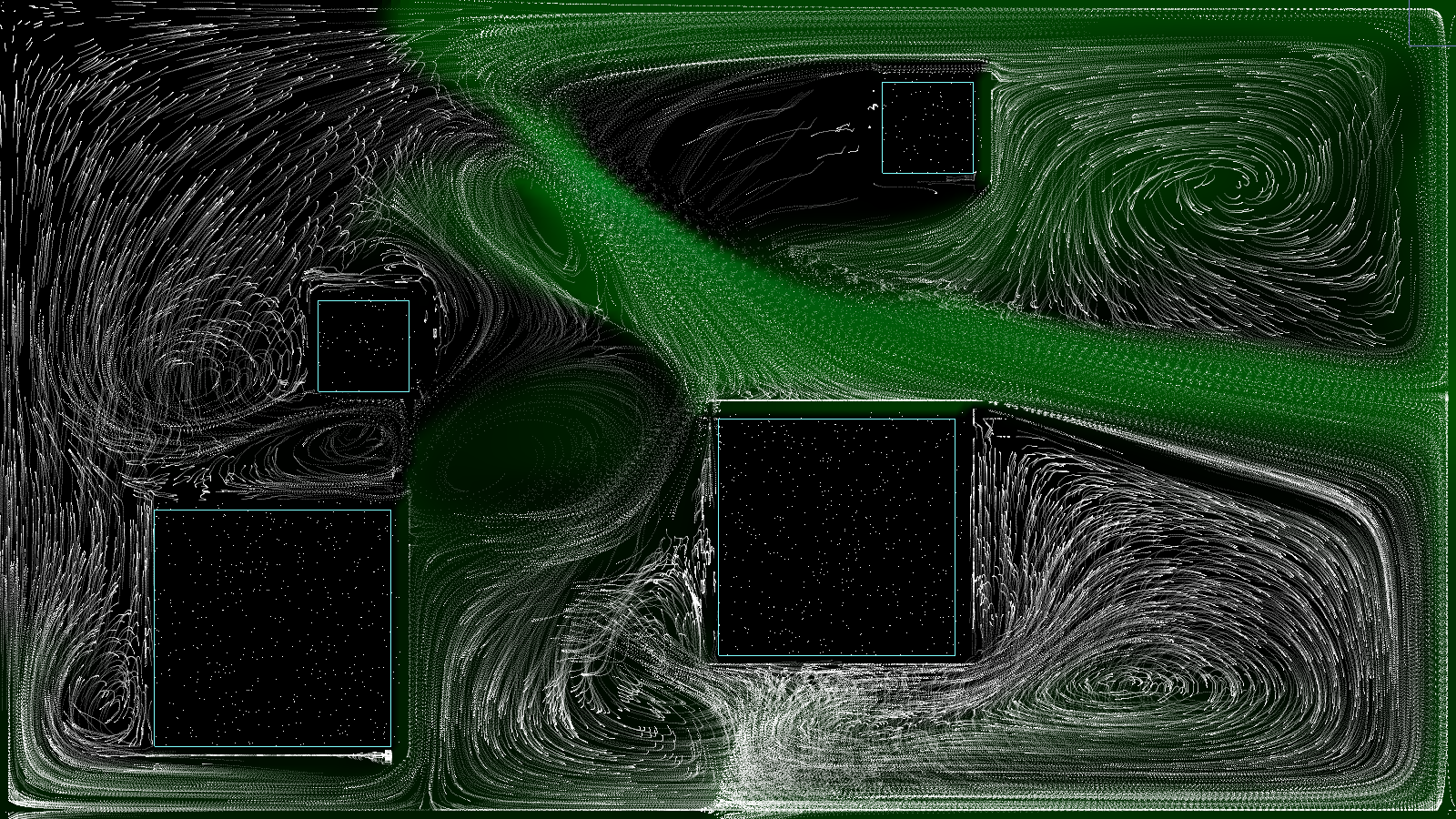FluidSolver
Real time 2D simulator of fluid mechanics in C++/Qt/OpenGl.
Watch a demo on youtube: https://www.youtube.com/watch?v=i2-zOoBbdk0
License: Apache v2.0
Description
This project provides open-source librairies to solve the Navier-Stokes equations based on Jos Stam paper, and an interface to simulate a fluid in 2D.
The source code can be found in the following directories:
- solver : solving librairies;
- display: interface.
Instructions
$PATH_TO_BIN/FluidSolver
Use the option -h or --help to show the usage message.
This message shows the different options available.
For instance, the option -config can be used to restore
a previously saved configuration, with the actual screen
resolution. (see -lconfig to list saved configurations,
more details in the help screen)
Shortcuts
Keyboard
SPACE .......... Pause / Resume the simulation
ENTER .......... Change display mode
F .............. Reset the fluid
R .............. Reset the fluid and the sources
BACKSPACE ...... Reset the system (fluid, sources & obstacles)
V .............. Toggle velocity field drawings
M .............. Toggle mouse velocity modifications
+ .............. Increase cursor size
- .............. Reduce cursor size
F1 ............. Toggle fullscreen
Ctrl-S ......... Save the simulation
Ctrl-O ......... Restore a saved simulation
ESC, Ctrl-W .... Quit
Mouse
Left button ........... Inject fluid density
Right button .......... Remove fluid density
Ctrl + Left button ... Add a density source
Ctrl + Right button .. Add obstacle
Shift + Left button ... Add a directionnal source
a) first click to set the source position
b) second click to set direction and speed
Wheel Up ....... Increase cursor radius
Wheel Down ..... Decrease cursor radius
Leap Motion (experimental)
Any movement of the fingers tips in the vertical plane above the Leap Motion will be translated as a velocity modification. If a finger tip is crossing that plane, some fluid density will be injected into the system.
Screenshots
 |
|---|
 |
Credits
This project was originally an academic work of students from the ENSEIRB-Matmeca engineering school.
BELLIER Maxime
BRISSET Clement
CASTELLI Stephane
LACHDHAF Sami
LASSERRE Christian
VAGLICA Sylvain
www.enseirb-matmeca.fr
